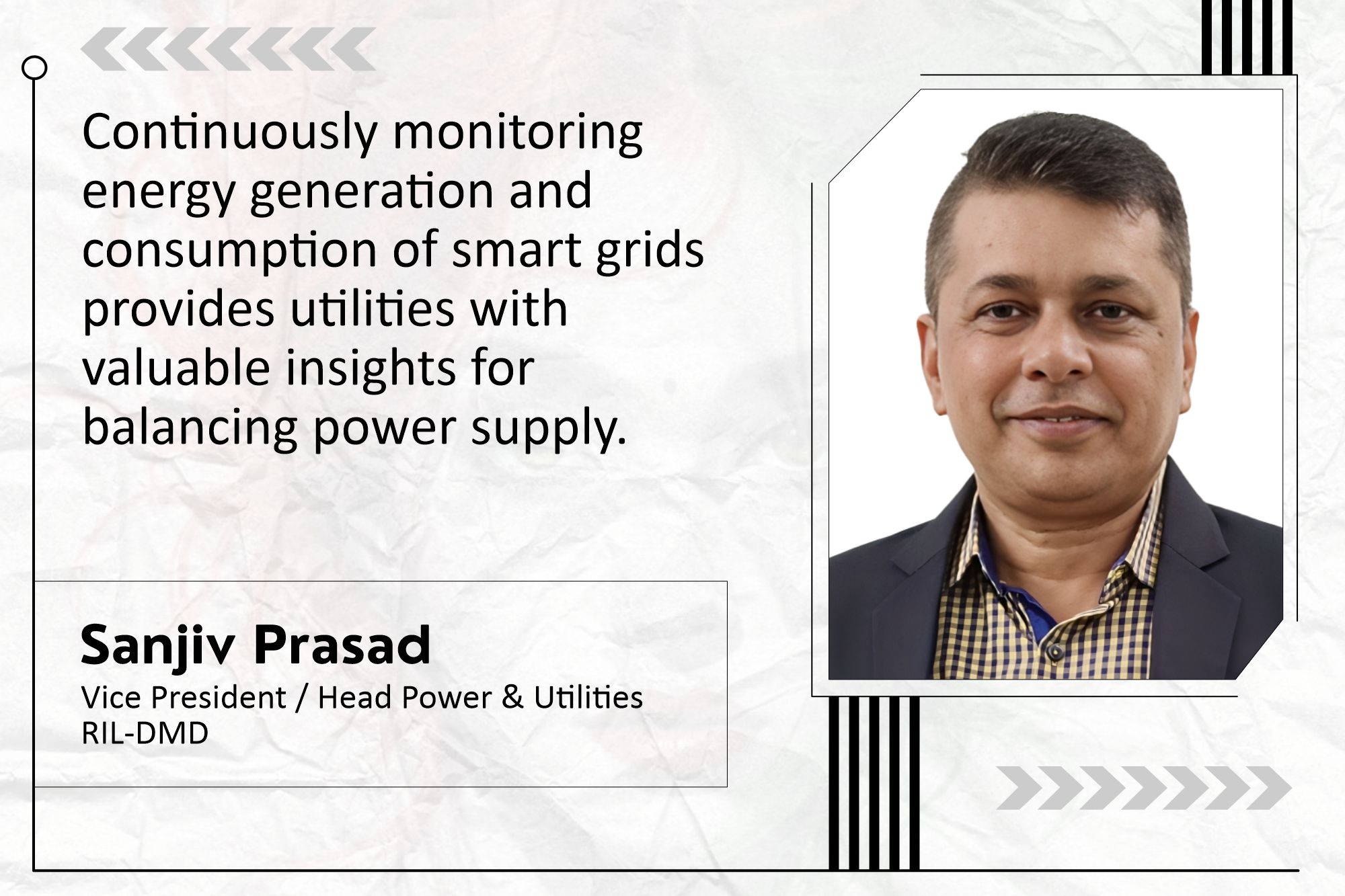Smart Grids balancing renewable energy growth
By EPR Magazine Editorial March 25, 2025 6:40 pm IST
By EPR Magazine Editorial March 25, 2025 6:40 pm IST

Grid stability is crucial to a reliable power supply, ensuring that voltage and frequency remain constant and electricity is delivered without disruptions. In India, solar and wind are the primary renewable energy sources. Solar generation fluctuates with the availability of sunlight, while wind power depends on wind speeds, which vary throughout the day and night. These fluctuations can lead to voltage and frequency imbalances, making it difficult to ensure uninterrupted power supply. Disruptions like blackouts and load shedding are undesirable in modern energy systems where reliability is expected.
One of the most effective ways to address this challenge is by adopting smart grids. Smart grids integrate digital technologies, sensors and software that enable real-time data transmission and communication. Continuously monitoring energy generation and consumption of smart grids provides utilities with valuable insights for balancing power supply. They facilitate automated adjustments, allowing backup generation sources like thermal power plants to ramp up when renewable output drops. Grid automation, advanced metering infrastructure and distributed energy resource management systems further enhance operational efficiency.
Energy storage systems also play a pivotal role in maintaining grid stability. Battery Energy Storage Systems (BESS) and Pumped Storage Plants (PSPs) can store excess renewable energy and release it when needed. During periods of low renewable generation, stored energy can be dispatched to meet demand, reducing the likelihood of power outages. Co-locating BESS with solar farms is becoming an increasingly common strategy to ensure a reliable energy supply.
Flexibility in generation sources is essential to accommodate renewable growth. Thermal power plants, traditionally slow to adjust their output, must adopt more flexible operations. Cycling thermal plants—ramping generation up or down quickly—is one approach to improving responsiveness. Similarly, hydroelectric plants can optimise their operations to stabilise during sudden fluctuations. Accurate forecasting of renewable generation using advanced weather prediction models further supports grid management by enabling proactive adjustments.
Geographical limitations also contribute to grid stability challenges. Renewable energy generation is often concentrated in specific states such as Tamil Nadu, Andhra Pradesh, Gujarat and Karnataka. In contrast, other regions may have limited renewable capacity due to inadequate infrastructure. Strengthening the transmission network through new lines and substations is essential to facilitate the smooth flow of electricity across regions. The grid becomes more resilient by enabling power transfer from surplus regions to deficit areas,
Policy measures are equally significant in promoting grid stability. The Ministry of New and Renewable Energy (MNRE) has proposed mandatory storage backup requirements recommending that renewable projects maintain energy storage equivalent to 25 percent of their capacity. This ensures sufficient backup power during periods of low generation. Additionally, the concept of demand-side management, including time-of-use pricing and shifting agricultural loads to off-peak hours, helps balance demand with available supply.State regulations also influence grid flexibility. Some states have imposed minimum operating levels for thermal plants, restricting their ability to reduce output when renewable generation is high. Revisiting these regulations to provide greater flexibility is essential. Furthermore, improved coordination among independent power producers, grid operators, and regulatory bodies can ensure more responsive grid management.
Recent instances of grid instability underscore the urgency of these measures. In August 2024, high renewable generation resulted in elevated grid frequencies, reaching 50.4 Hz on certain days. Such deviations pose risks to electrical infrastructure and consumer equipment. Grid operators must implement stricter scheduling and dispatch protocols to prevent recurrence while ensuring better coordination between renewable and conventional generators.
We use cookies to personalize your experience. By continuing to visit this website you agree to our Terms & Conditions, Privacy Policy and Cookie Policy.